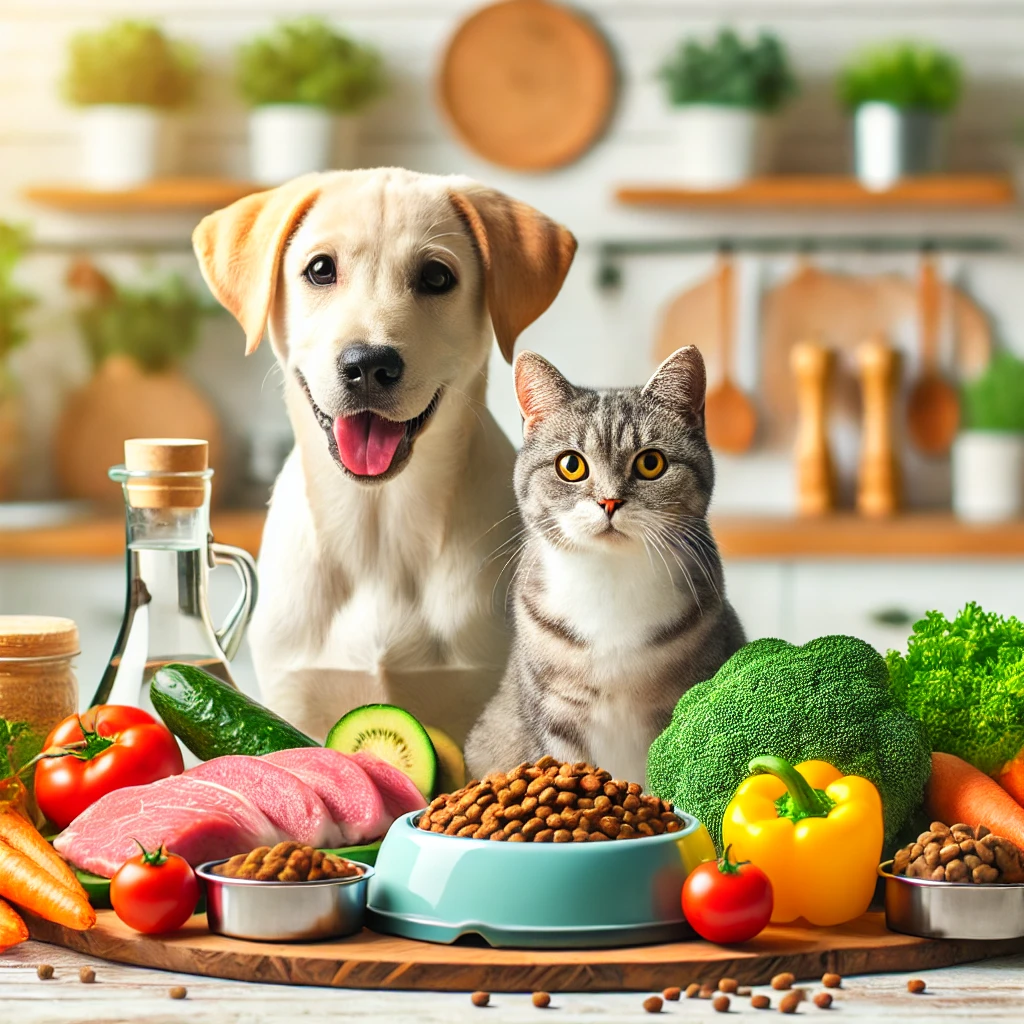
The Nutrition Guide for Pets
In recent years, the importance of pet nutrition has come to the forefront, as more pet owners in the United States strive to ensure their furry companions lead long and healthy lives. Just like humans, pets require a balanced diet to maintain their health, energy levels, and overall well-being. This article delves into the essential aspects of pet nutrition, providing valuable insights for pet owners to make informed dietary choices.
1. Understanding the Basics of Pet Nutrition
Every pet species has unique dietary needs based on their physiology, age, activity level, and health status. While cats are obligate carnivores and thrive on a meat-based diet, dogs are omnivores and can benefit from a mix of proteins, carbohydrates, and fats. Small mammals, reptiles, and birds each have their own specific dietary requirements.
Key nutrients essential for pets include:
- Proteins: Vital for muscle growth and repair.
- Fats: Provide energy and support skin and coat health.
- Carbohydrates: A source of quick energy (though less crucial for cats).
- Vitamins and Minerals: Support various bodily functions, including bone health and immune function.
- Water: Often overlooked, hydration is critical for all pets.
2. Tailored Diets for Different Life Stages
Pets require different nutrition at various life stages:
- Puppies and Kittens: High-protein diets to support rapid growth.
- Adult Pets: Balanced diets to maintain energy levels and health.
- Senior Pets: Special diets with lower calories and joint support nutrients like glucosamine.
3. Commercial Pet Foods: Decoding Labels
Choosing the right pet food can be overwhelming with the multitude of options available. Here’s how to make sense of pet food labels:
- Look for the AAFCO (Association of American Feed Control Officials) statement, which ensures the food meets nutritional standards.
- Check the ingredients list. High-quality foods list specific protein sources (e.g., “chicken” or “salmon”) as the primary ingredient.
- Avoid foods with excessive fillers, artificial preservatives, or unnamed meat by-products.
4. Raw Diets: Are They Safe?
Raw diets, which often include uncooked meat, bones, and organs, have gained popularity. Advocates claim these diets mimic what pets would eat in the wild. However, raw diets come with risks, including bacterial contamination and nutritional imbalances. It’s essential to consult a veterinarian or pet nutritionist before transitioning to a raw diet.
5. Grain-Free Diets: Myth vs. Reality
Grain-free pet foods became trendy as some owners associated grains with allergies or poor digestion. However, studies have linked certain grain-free diets to heart issues in dogs (dilated cardiomyopathy or DCM). Most pets tolerate grains well, and they can provide valuable nutrients.
6. Homemade Diets: Proceed with Caution
Many pet owners prefer preparing homemade meals to control ingredient quality. While this approach has benefits, it’s challenging to ensure the diet is nutritionally complete. Consulting a veterinarian or using a balanced recipe from a reliable source is crucial.
7. Special Diets for Pets with Health Conditions
Pets with specific health issues may require tailored diets:
- Obesity: Low-calorie, high-fiber diets to promote weight loss.
- Kidney Disease: Diets with controlled protein and phosphorus levels.
- Allergies: Hypoallergenic or novel protein diets.
Always consult a veterinarian before making significant dietary changes for pets with medical conditions.
8. The Role of Supplements
While high-quality pet food often contains essential nutrients, some pets may benefit from additional supplements. Common supplements include:
- Omega-3 fatty acids: For joint health and a shiny coat.
- Probiotics: To support digestive health.
- Glucosamine and Chondroitin: For joint support, especially in older pets.
9. Treats: Moderation is Key
Pet treats are a great way to reward your furry friends, but overindulgence can lead to obesity. Opt for healthy treats like freeze-dried meat, vegetables (e.g., carrots), or commercially available low-calorie options. Ensure treats make up no more than 10% of your pet’s daily caloric intake.
10. Importance of Hydration
Water is the cornerstone of good health for pets. Always provide clean, fresh water and encourage hydration, especially for pets like cats, who naturally have a low thirst drive. Wet food can be an excellent way to increase water intake.
Final Thoughts
A healthy diet is the foundation of your pet’s well-being. By understanding their nutritional needs, reading labels carefully, and consulting professionals when necessary, you can ensure your beloved pet thrives. Remember, every pet is unique, and their dietary needs may change over time. Regular veterinary check-ups are essential to monitor their health and adjust their nutrition plan as needed.
Your pet’s happiness and longevity start with what’s in their bowl. Make every meal count!






